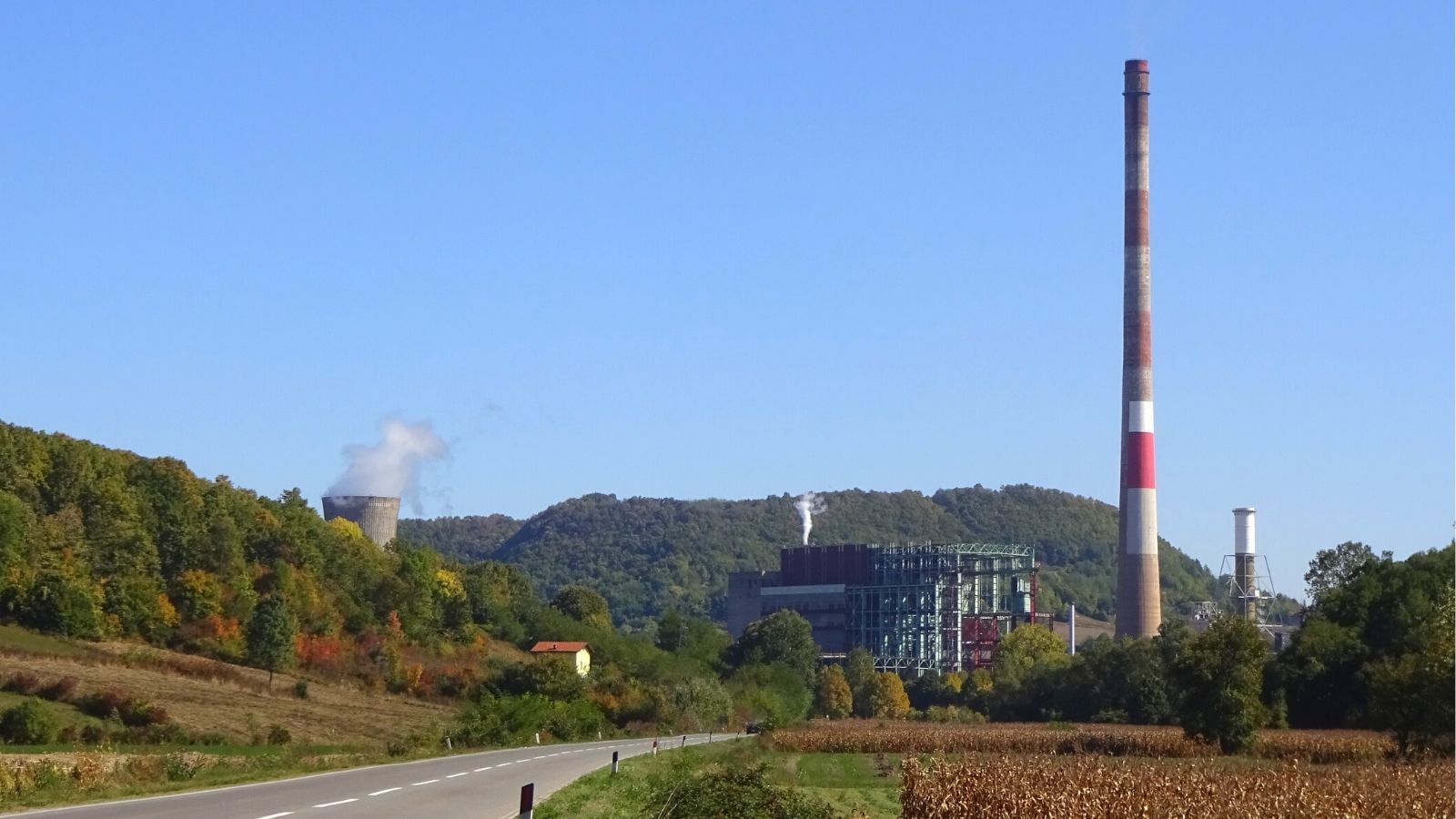Ugljevik power plant, Bosnia and Herzegovina
Commissioned in 1985, the 300 MW coal power plant in Ugljevik, Bosnia and Herzegovina, has become famous for emitting more sulphur dioxide than all of Germany’s coal power plants in 2019.

Stay informed
We closely follow international public finance and bring critical updates from the ground.
Background
To put things in perspective, for every GWh of electricity generated in 2019, Ugljevik emitted 50 tonnes of sulphur dioxide, that is 50 times more than EU’s worst polluter, Bełchatów in Poland, which emitted 1.1 tonnes of SO2/GWh.
The problem is not new, but the paradox is that a financing contract for installing desulphurisation (de-SOx) equipment at Ugljevik was signed more than 14 years ago, and the installation is still not functioning.
Financed by a loan from the Japan International Cooperation Agency (JICA) signed back in 2009, works on the de-SOx equipment started only in 2017 and test operations began in December 2019. It seemed likely that in 2020, SO2 emissions would be significantly lower, finally justifying the EUR 85 million investment.
However, in February 2020 technical problems were reported. The plant’s dust filters, overhauled more than three years ago by the Czech company Termochem at a cost of around EUR 10 million, were faulty, and their proper functioning is reported to be a precondition for desulphurisation. The plant operator spent an additional EUR 100,000 on a study that would show how to address the problem.
In 2021, RiTE Ugljevik, the power plant operator, sought ‘technical assistance’ to obtain the operating permit, adding an extra EUR 100,000 to the costs of this project. The contract was awarded to a company owned by the mayor of Zvornik, raising a host of questions on why the publicly-owned utility RiTE Ugljevik is not capable of obtaining an operating permit itself.
The plant finally obtained an operating permit for the desulphurisation equipment in November 2021. However, its 2022 sulphur dioxide emissions of 85,526 tonnes were barely any lower than those in 2021 (86,774 tonnes). Since 2018, when the Large Combustion Plants Directive entered force under the Energy Community Treaty, there has been no significant decrease in the plant’s emissions.
Out of all Bosnia and Herzegovina’s coal power plants, Ugljevik’s emissions caused the most days of asthmatic symptoms in children, with over 12,000 days in 2020. This is equal to 48 per cent of all such impacts from the country’s coal power plants which are included in the National Emissions Reduction Plan. Ugljevik is also responsible for the highest number of cases of bronchitis in children due to dust emissions, and of hospital admissions because of cardiovascular and respiratory symptoms, with 1,142 cases of the former and 469 of the latter in 2020.
Latest news
Western Balkans: Civil society groups call on European Commission to strengthen support for just transition
Press release | 4 October, 2024A group of civil society organisations, including CEE Bankwatch Network, are calling on the European Commission and other actors to step up support for a just transition in coal-dependent communities in the Western Balkans.
Read moreWestern Balkans: coal pollution increases due to government failures – new report
Press release | 17 September, 2024In 2023, Western Balkan governments’ dereliction of their law enforcement duties again allowed an increase in sulphur dioxide (SO2) pollution from the region’s antiquated coal power plants, according to the sixth edition of Bankwatch’s Comply or Close report, published today (1). Dust and nitrogen oxides (NOx) pollution from coal plants also continued to exceed legal limits.
Read moreEnvironmental NGOs demand halt to KfW controversial biomass investments in Serbia
Press release | 29 July, 202441 environmental organisations from the Western Balkans, Germany, and across Europe have called on German state-owned development bank KfW to stop financing wood biomass energy in Serbia in order to avoid forest degradation risks and locking Serbia into further dependency on high-carbon energy sources.[1]
Read moreRelated publications
Winners and losers – Who benefits from high-level corruption in the South East Europe energy sector
Study | 24 June, 2014 | Download PDFEnergy is one of the biggest economic sectors in south-eastern Europe and is set to grow even further with the region moving closer to the EU. The region has high potential for energy efficiency and sustainable renewable energy investments. Yet, as this study illustrates with a number of examples, countries have shown little ability to absorb investments at a large scale without systemic corruption and patronage. See also an interactive map with summaries for each case at https://bankwatch.org/SEE-energy-corruption
New online toolkit to tackle the Kings of Coal in south east Europe and Turkey
Bankwatch Mail | 14 May, 2014 |Last year saw international financial institutions such as the European Investment Bank, the European Bank for Reconstruction and Development and the World Bank falling like dominoes one after the other and announcing in rapid succession that they will halt – almost totally – financing for new coal power plants. These banks were also joined by other institutions such as the US Exim Bank and the Nordic Investment Bank, and governments including the US, UK, Netherlands and Scandinavian countries.
The village of Junkovac near the Kolubara mine – neglected and destroyed
Briefing | 9 May, 2014 | Download PDFThe story of Junkovac in Serbia highlights systemic violations of human rights, neglect and wrong doings in the lignite mining sector that have not changed since the involvement of the European Bank for Reconstruction and Development began in 2000. One of most recent cases of violations of human and property rights involves the illegal dumping of overburden from the mines at the Junkovac site that for years has been a threat to the properties and lives of hundreds of people in the nearby village.
